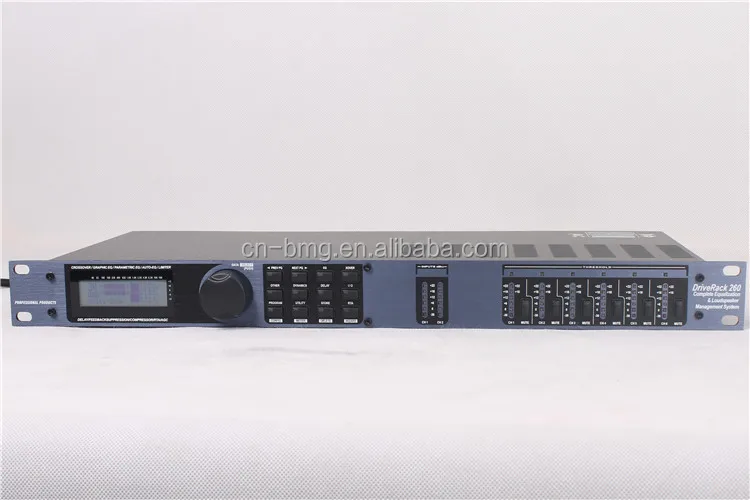

No, I'd never put the sub-harmonic material to the 15s! The speaker cabinets do have a passive crossover or can be run bi-amped. The active crossover will not be used most of the time, no. No, you haven't missed anything, except perhaps that my main objective is saving time in setup. We've got a couple of old Peavey single 15s with a radial horns for FOH now, and is plenty for the rooms we play. It doesn't have to be really loud, just a little "electric" to help make the music and the show bigger than life. PS.I'm jealous of your 18s! I'd love to mic kick, snare and run a direct on the bass every gig. I'll look for the dbx users forum on line.Īs for your point #2.I'm a stickler on this one.AMPS LAST ON.FIRST OFF These can be had on Ebay new for about $350 for "B" stock with warranty, then another 100 for the RTA mic.

I just have to decide if the time and convience is worth the money.

I suppose it's just like anything else in that there'll be a learning curve followed by a dial-it-in curve, but then perhaps the payoff would come when returning to the same club and voila.instant graph settings.Īlso good info regarding getting a baseline on the speaker curve outdoors. However, now that I understand, after reading your post, saving the settings for the room (ahhhh."user programs".), it seems like you'd only need to pink the club once and then save all the settings.

Thanks so much Dick for taking the time to respond.Īlthough I probably won't use the active crossover component with our band since we generally just reinforce vocals and blues harp, I may on occasion use it like for some side DJ work coming up.Īnd I probably won't use the compressor/limiter function as I use a dbx 166xl last in the chain before amplification. Last edited by Dick Wood on 11:50 am edited 1 time in total One last thought is that if you have the extra money,buy the Driverack 260 instead of the PA model as you will have much more flexibility and it can be programmed and run wirelessly by computer.Įither way the DBX is probably one of the best units you can buy bar none. The DBX Users Forum explains this in detail if you've never set up Gain Structure before.Ģ.Proper power up and power down sequence is VERY important where you power up components in the proper order as per the DBX manual. There are some important points to consider when using the Driverack.ġ.Be SURE you set up the proper gain structure of all pieces you will be using so that there is no clipping. With all that said,I have considered getting another sound company to come out and go over our system to see if we are getting the best sound we can. You can the save these settings in user banks for each venue you play and recall them for faster setup time. We don't use the Compression feature as our Mackie TT24 mixer has DSP onboard. It is my understanding that in order for the RTA feature to work properly, the PA should first be setup in an outside setting in order to get a flat baseline speaker response then run again in the club using the pink noise/RTA feature. After months of use (playing loud) we never have had feedback so I guess he was right. We had a sound man (who uses the DBX 260) come out and set ours up and his belief is if you set up your EQ properly,you really don't need to enable the anti-feedback feature. There is also the DBX Users Forum online which has tons of great info on the setup and use of all the DBX products. The setup wizard should guide you through the various steps easily. We use the Driverack PA and it does a great job.Our PA uses 2 Peavey dual 18" and 2 B52 dual 15" tops with a separate QSC RM2450 bridged running each individual cabinet.


 0 kommentar(er)
0 kommentar(er)
